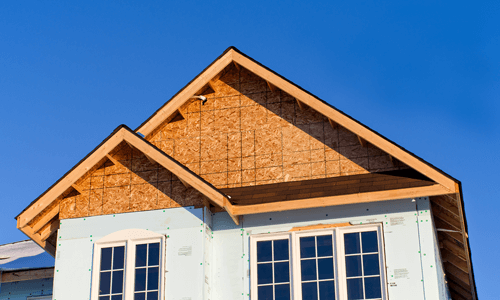In the face of a global pandemic and increasingly frequent and devastating disasters, the need for more resilient buildings and communities is apparent.
Improving resiliency in the built environment will require innovations and investment in material and building science, public policy that prioritizes updated, modern building codes, and engagement from all sectors, from businesses to lawmakers to community members.
At an ACC-sponsored roundtable session last week at the Greenbuild 2020 Resilience Summit, representatives from ACC, the Alliance for National and Community Resilience (ANCR) and the Los Angeles County Chief Sustainability Office discussed how to align these approaches to foster change and improvement on a greater scale and at an expedited pace.
In collaboration with the private sector with companies like DuPont and BASF, ANCR focuses on institutionalizing resiliency and promoting intersections among buildings, transportation and community priorities. ANCR, founded in part by the International Code Council (ICC), works to advocate for model building codes, developed at the national level, which can be implemented by state and local governments to meet their specific needs – including challenges presented by different geographies and weather events.
As the largest county in the country, Los Angeles County also considers resiliency from multiple attributes and hazards, not only in buildings, but also in intersections with the transportation sector, job creation and economic development, as well as considering impacts on people who live and work in the community. As Los Angeles continues to face challenges related to extreme heat, for example, buildings that incorporate energy-efficient technologies can help reduce greenhouse gas emissions, as well as reduce energy costs, lessening the economic burden on residents, and providing passive survivability during power outages.
The products of chemistry can play an important role in building for resiliency. For example:
- Silicone sealants in exterior joints guard against passage of air and moisture into a building. This is important in creating “passive survivability” and maintaining occupant comfort and safety—for example, in the event of power outages during hurricanes or blizzards. Such extreme weather conditions can result in bulk water or moisture-laden air harmful to a building’s occupants, contents and structural components.
- Spray polyurethane foam can help increase a building’s resistance to wind uplift by creating an airtight roof assembly. Closed-cell spray foam is also the only material certified by the Federal Emergency Management Administration (FEMA) to be flood resistant.
- Cool roofs, made from highly reflective paint, sheet covering or tiles, are designed to reflect more sunlight and absorb less heat than a standard roof. While standard dark roofs can reach temperatures of 150°F or more in the summer sun, a cool roof under the same conditions could stay more than 50°F cooler, saving energy by using less air conditioning and decreasing roof temperature, which can help extend the life of a roof.
- Membranes and Adhesives, used in constructing vegetative “living” roofs, can provide critical storm water mitigation during water events. Living roofs can help keep a building dry while also reducing the burden on storm water and sewer systems during natural disasters. On a wider scale, green roofs can improve air quality and help reduce the Urban Heat Island Effect, a condition in which city and suburban developments absorb and trap heat.
Finally, session speakers agreed that the time to start implementing change is now, so that the buildings being constructed over the next five years, that will last 50 years or more, incorporate resiliency and enable stronger communities.


